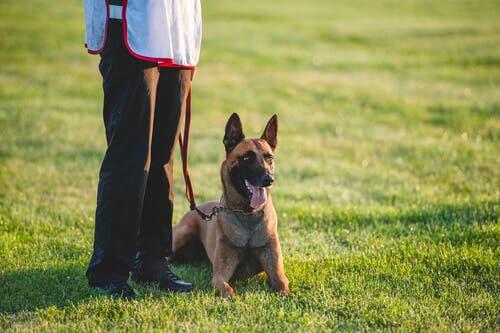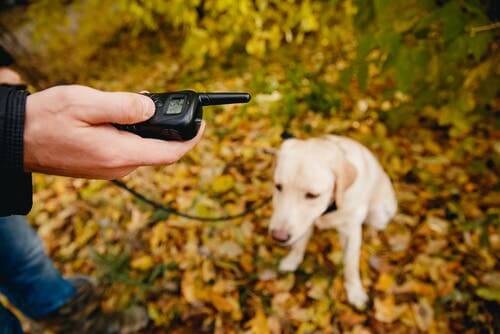Tips for Interacting with Your Deaf Dog

Currently, specialists suggest that up to 89 breeds of dogs are at risk of being born with congenital deafness. In fact, 30% of Dalmatian puppies are born deaf, for example. However, many decide to get rid of an animal when they discover their disability out of fear or ignorance. But a deaf dog can actually lead a very normal life. We’ll help you interact with your deaf dog and soon you’ll realize they’re just like other dogs!
Training your deaf dog is possible
At first, giving orders to a dog that can’t hear you seems like a useless task. This is especially true considering that even dogs that can hear sometimes ignore their master’s calls. The key to this process is to use physical commands. This way, you can make your deaf dog understand what you want.
- In the first phases of training, the main thing is to learn to attract the attention of your dog. This is because you’ll have to resort to gestures without sound. One way to get your dog’s attention is through a vibration collar. These work by remote control. You want to make the animal realize that this vibration means that you want their attention. Encourage your dog to turn their head when you activate the collar by giving them small prizes. Another option is a laser pointer to get your dog’s attention.
- Once you’re able to capture your dog’s attention, you can teach them to associate certain gestures with particular orders. Among the most basic orders are teaching your deaf dog to come back to your side or stop doing something we don’t like. Keep in mind that a deaf animal is going to be more aware of their master, especially in unknown environments.
- Some dogs can even understand certain words in sign language. This can be especially useful when explaining that it’s time to go for a walk, that you want them to stay, or that you’re happy or angry with their behavior.
- Throughout the entire process, positive reinforcements allow your dog to associate orders with something pleasant. It also helps them remember them. Make sure you have small treats on hand to stimulate them.

Useful tips to keep your deaf dog safe
One of the main dangers is that a deaf dog is unable to hear cars or other dogs. As a result, it’s essential that you keep your dog on a leash in urban spaces or near streets, as well as in the presence of aggressive dogs.
In order to know where your pet is at all times, you can also resort to putting a bell on their collar. You should also indicate on their collar that the dog is deaf, along with your address, in case your dog gets lost.
At night, since it’s more difficult for your dog to see your signals, you can always resort to using laser pointers or flashlights. You can teach them certain patterns to demonstrate they should come back or to identify you from a distance.

The myth that deaf dogs are more aggressive
Any animal will react with surprise or even aggression if an unknown person approaches and touches them without them being aware. In the case of deaf dogs, they aren’t able to hear anyone approaching, meaning that any touch can be threatening.
As a result, it’s essential that you teach your deaf dog from an early age not to identify any petting with dangers or threats. You can start touching their head or back from behind. Then, reassure them after and always use positive rewards and reinforcements. This will teach them to associate human contact with positive ideas.
We should end the fallacy that deaf dogs are more aggressive or less intelligent than other dogs. It’s important to stop people from abandoning deaf dogs based on preconceptions and prejudices.